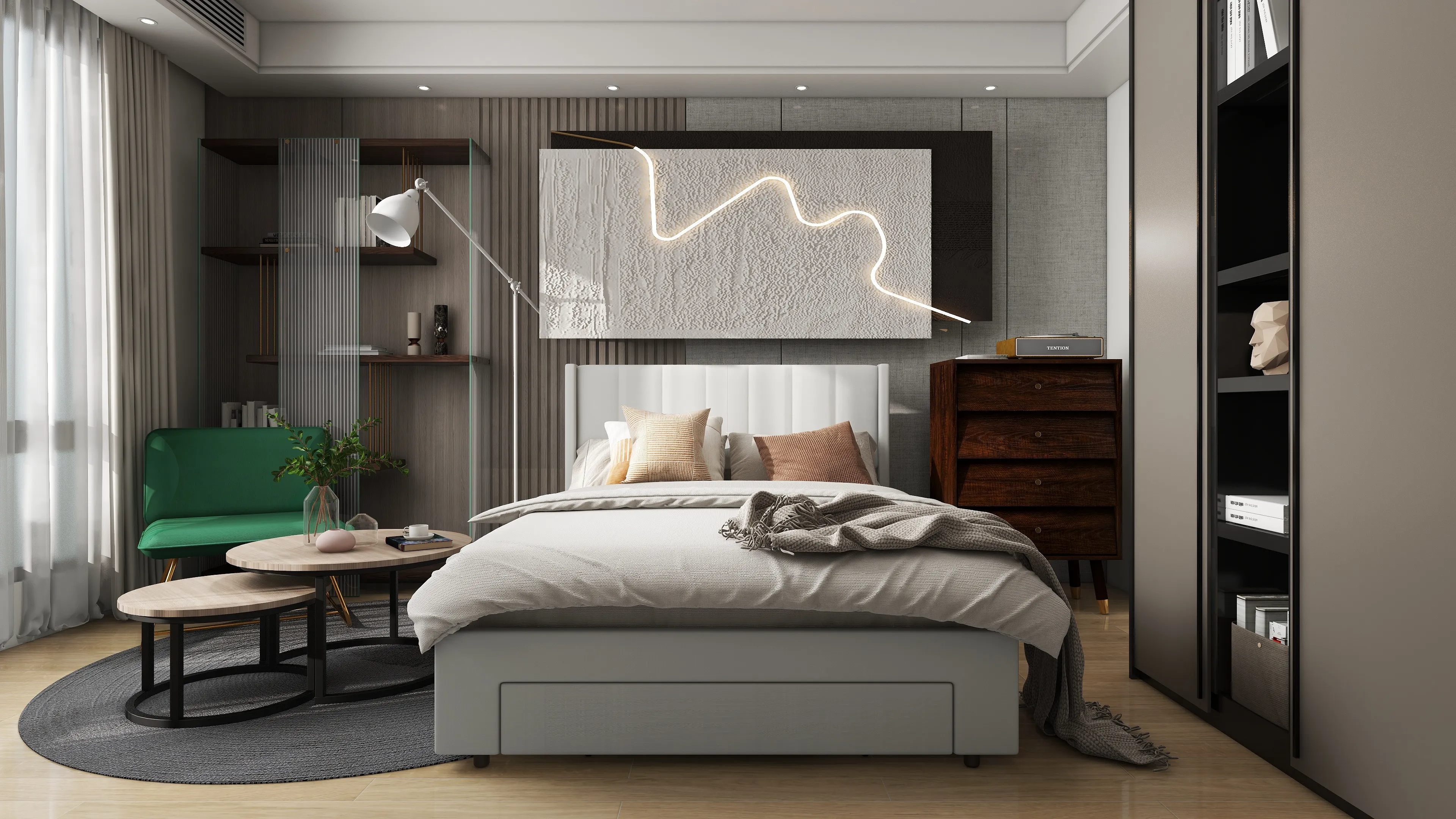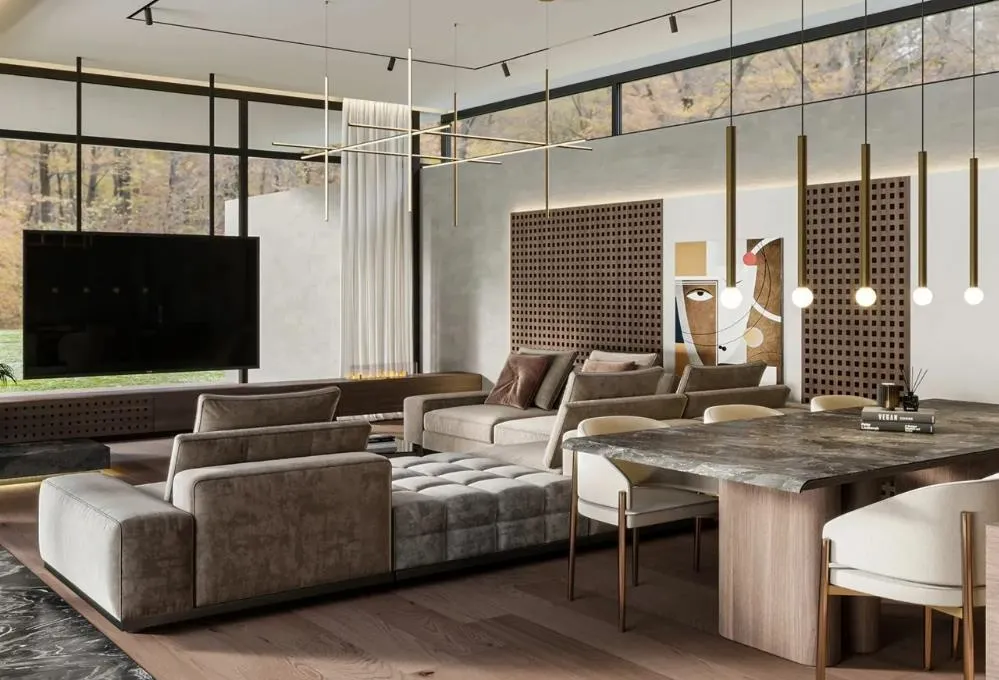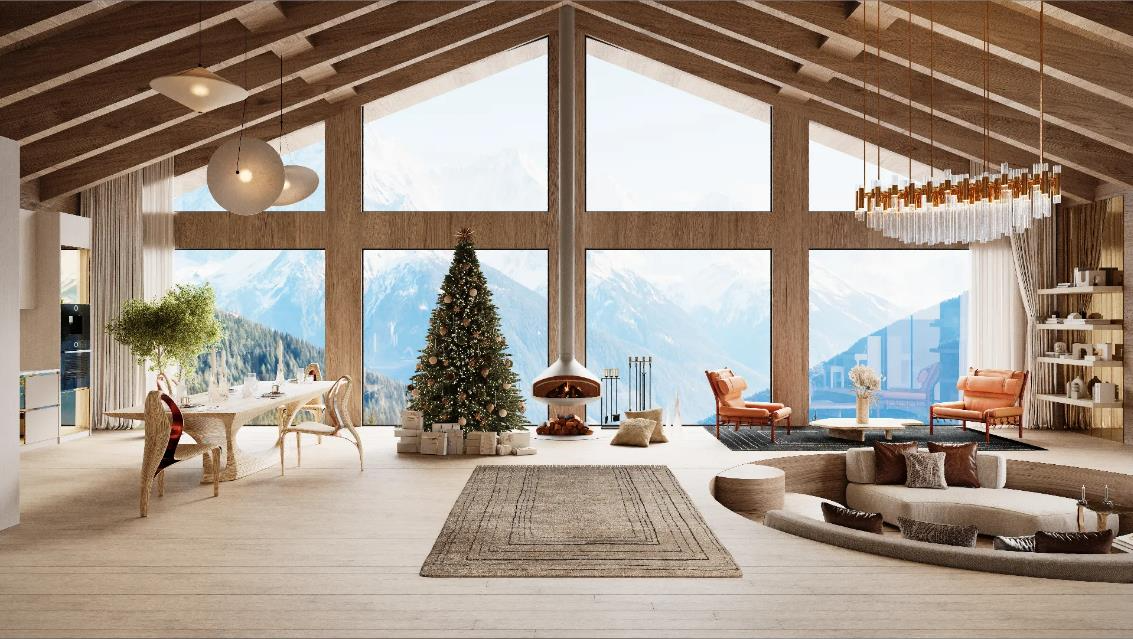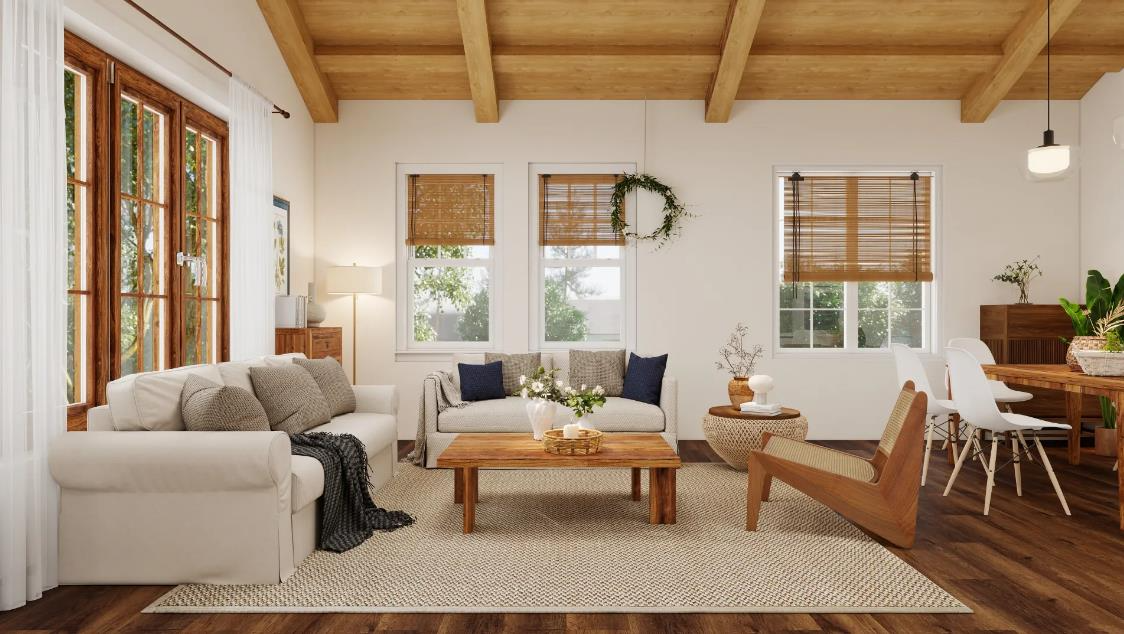Modern Dining Room Design Ideas 2024
In modern home design, the spatial layout and style integration of the living room and dining room have become the key to improving the living experience. With the diversification of lifestyles, more and more families tend to create an open space that is both comfortable and functional. The design of the living room and dining room should not only consider visual coordination, but also practicality and comfort. Through clever color matching, furniture selection and lighting design, you can create an ideal space that is suitable for daily leisure and can accommodate family gatherings. This article will share some popular home design inspirations in 2024 to help you achieve an ideal living and dining room space that combines functionality and aesthetics.
Here are four modern dining room design styles for 2024:

1. Minimalist Modern lounge dining room design ideas
Key Features: Clean lines, neutral color palettes, open spaces, and functional furniture.
Design Elements: Use of materials like light wood, steel, and glass. Simple, streamlined dining tables with no excessive ornamentation. Focus on creating an uncluttered, serene atmosphere.
Benefits: Maximizes space and enhances a sense of tranquility.
2. Industrial Chic lounge dining room design ideasKey Features: Raw materials such as exposed brick, metal, and concrete paired with sleek, modern furniture.
Design Elements: Darker tones, pendant lighting with metal finishes, and reclaimed wood dining tables. Large windows and open shelving are also common.
Benefits: Adds character and warmth while keeping the space modern and functional.
3. Scandinavian Influence dining room design ideas
Key Features: Bright, airy spaces with a mix of natural materials and a focus on functionality.
Design Elements: Light-colored woods, simple furniture with clean lines, and touches of greenery. Neutral walls with occasional pops of color from textiles like rugs or cushions.
Benefits: Creates a welcoming, cozy space with a timeless appeal.

4. Transitional Modern dining room design ideas
Key Features: A blend of traditional and contemporary styles, offering a balance between comfort and sleekness.
Design Elements: Rich wood tones, elegant but simple lines, and subtle patterns in furniture or décor. Think of a classic wooden dining table paired with modern, upholstered chairs.
Benefits: Offers a timeless, versatile style that works well in many types of homes.
Lounge dining room design ideas
Lounge dining room designs blend relaxation and dining into a cohesive, functional space, ideal for both casual living and entertaining. To create a harmonious lounge-dining area, focus on an open floor plan that encourages flow between the two zones. Use a neutral color palette with accent tones for warmth, and incorporate natural materials like wood, stone, or fabric for texture.
The dining table should be central but not overpowering, complemented by comfortable, stylish lounge seating like a cozy sofa or armchairs. Lighting plays a key role, with layered options such as pendant lights above the dining table and soft lamps around the lounge area to create ambiance. Incorporating multifunctional furniture, such as a dining table that can double as a work surface, enhances practicality without sacrificing style.
Small dining room design ideas
For small dining rooms, maximizing space while maintaining style is key. Opt for a minimalist design with light colors to create a sense of openness. A round or extendable dining table works well in compact spaces, offering flexibility for different occasions. Choose chairs with slim profiles to avoid overcrowding the room. Utilize vertical space by incorporating wall-mounted shelves or storage units for added functionality.
Consider mirrors to reflect light and make the room feel larger. Multi-purpose furniture, such as a bench that doubles as storage, can also help maximize functionality. Keep the décor simple, using plants or subtle artwork to add personality without overwhelming the space. Thoughtful lighting, such as pendant lights or sconces, can also help define the dining area while adding a touch of elegance.
Dining room wall design ideas
Dining room wall designs can elevate the overall ambiance and add character to the space. Consider accent walls using textured materials like wood paneling, brick, or stone for a warm, rustic feel. A bold color or wallpaper with geometric patterns can add vibrancy and create a focal point. Alternatively, lighter tones with subtle textures—like a plaster or linen finish—can make the room feel more spacious and airy.
For a modern touch, consider large-scale art pieces, mirrors, or floating shelves to display decorative items. Incorporating lighting into the wall design, such as wall sconces or track lighting, can enhance the atmosphere and highlight key design elements. Additionally, using vertical space for storage or greenery, such as a vertical garden, adds both functionality and style.
Conclusion
In home decoration design, the layout and style integration of the dining room, living room and leisure area are increasingly becoming the key to improving the quality of family life. For restaurant design, popular trends include simple modern style, industrial style and natural and warm Nordic style, focusing on the matching of colors, materials and the rationality of functions. The design of the living room and restaurant is mainly open-plan, and the two spaces are both independent and integrated through clever partitioning and integration. Choosing the right furniture, lighting and decoration can effectively improve the comfort and visual effect of the space. The design of the leisure restaurant focuses on creating a multi-functional area that can not only meet daily dining needs, but also serve as a place for leisure and socializing. Flexible furniture layout and appropriate lighting design are essential.
Whether it is to create a small and exquisite restaurant or to design a comfortable and warm living and dining room space, it is essential to choose the right platform to help you realize your home dream. Eclife home decoration design platform provides you with professional design advice, the latest home trends and inspiration, to help you easily realize your ideal home environment.
Frequently Asked Questions
1.How to design dining room ideas?
When designing a dining room, focus on functionality, comfort, and style. Start with a suitable dining table—round tables are great for small spaces, while rectangular tables work well in larger rooms. Choose seating that complements the table, such as stylish chairs or benches.
Select a color scheme that enhances the atmosphere, using lighter tones to create a sense of space or bold accents for warmth. Incorporate storage solutions like sideboards or shelving for added practicality. Finally, enhance the space with ambient lighting, such as a statement chandelier or pendant lights, and add personal touches with art or plants.
2.How to design adjoining dining room and den decorating ideas?
When designing an adjoining dining room and den, create a cohesive flow between the two spaces. Use a consistent color palette or complementary tones to unify the areas. For the dining room, select a table and chairs that suit the style of the den, whether modern or traditional. Use rugs to define each area and create boundaries without walls. Open shelving or a statement piece of art can tie the spaces together. Lighting is key—use pendant lights over the dining table and softer, layered lighting in the den for a balanced, inviting atmosphere.








